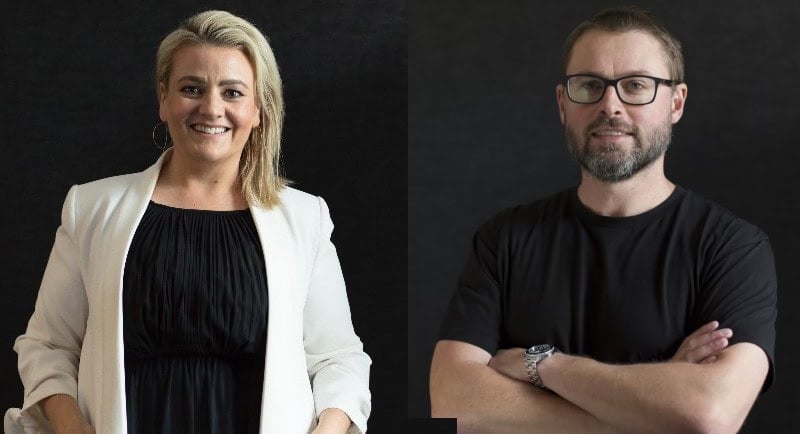TBWA New Zealand became one of the first creative agencies to successfully bring to life a viable, product-positive solution for child online safety with the marketing approach that launched Good Tings, which has also driven a 35% jump in sales for the client. Now, the agency wants brands to step up and do more to protect kids online.
Developed for New Zealand telco provider 2degrees, Good Tings is the world’s first first-phone safety program. From Grime raps to sticker bomb collections, the program and surrounding campaign efforts are designed to make establishing healthy phone habits genuinely appealing to its young audience, all while bridging the communication gap between child and guardian.
Speaking with Mediaweek, TBWA\NZ chief executive Catherine Harris and chief creative officer Shane Bradnick report that not only has the second drop of boxes just been issued for restock, but the program has now been incorporated into New Zealand schools as part of the syllabus.
Yet when it comes to online safety, Harris believes that while discussions on the topic are prevalent, tangible actions from brands and advertisers are lacking.
“We see a lot of it in terms of conversation. But we’ve seen no brands take enough of a stand in the space,” she says.
“If you think about phones always having been a source of great communication and connection… When these become devices that start to diminish great communication and connection, it feels like some brands and some businesses need to step in.
“If you look at what some of the billion or trillion dollar companies, in some cases, weren’t doing, to adequately provide any kind of guidance, support or effective enough safety for young people, it was causing a really big gap.”
The responsibility of brands and advertisers
The popularity of Good Tings in New Zealand comes at a time of heightened concern about child emotional and social wellbeing online.
Earlier this year, the 36 Months initiative launched to address the issue – led by Michael ‘Wippa’ Wipfli, co-host of Nova 96.9’s Sydney breakfast show, and Rob Galluzzo, founder of production company FINCH.
The pro-bono social change movement aims to raise the age of social media citizenship from 13 to 16, supported by News Corp Australia and NOVA Entertainment.
With a lack of trust in big tech and social platforms to keep kids safe online, the conversation extends to whether brands and advertisers should take more responsibility.
Bradnick summons the words of Sir John Hegarty: “A brand is the most valuable piece of real estate in the world: a corner of someone’s mind.”
Harris adds, “brands have an amazing ability to shift the conversation through the kind of advertising they do and what they choose to put into market.
“We’ve all got that opportunity, both in terms of just the pure media buying and then the power of our brands, our comms, and our spend to influence helpful behaviours and still do the right thing for the brand and the business.
“At the highest level, advertisers coming together to have a point of view around what safe online advertising looks like I think is unbelievably important.”
For Good Tings, Harris says the goal was to avoid limiting the conversation about healthy phone habits solely to social media usage – which is a “very specific” challenge.
“We wanted it to be something that, when kids got a ‘ting’ on their phone, they would know it was a good and healthy thing they got,” and likewise for when they sent ‘tings’ of their own.
The program: Good Tings
TBWA collaborated with the non-profit online safety charity NetSafe to identify the most important behavioural outcomes for the program. According to Harris, these outcomes were informed by two main problem areas that have emerged as children receive smartphones at younger ages, often from their parents’ hand-me-downs.
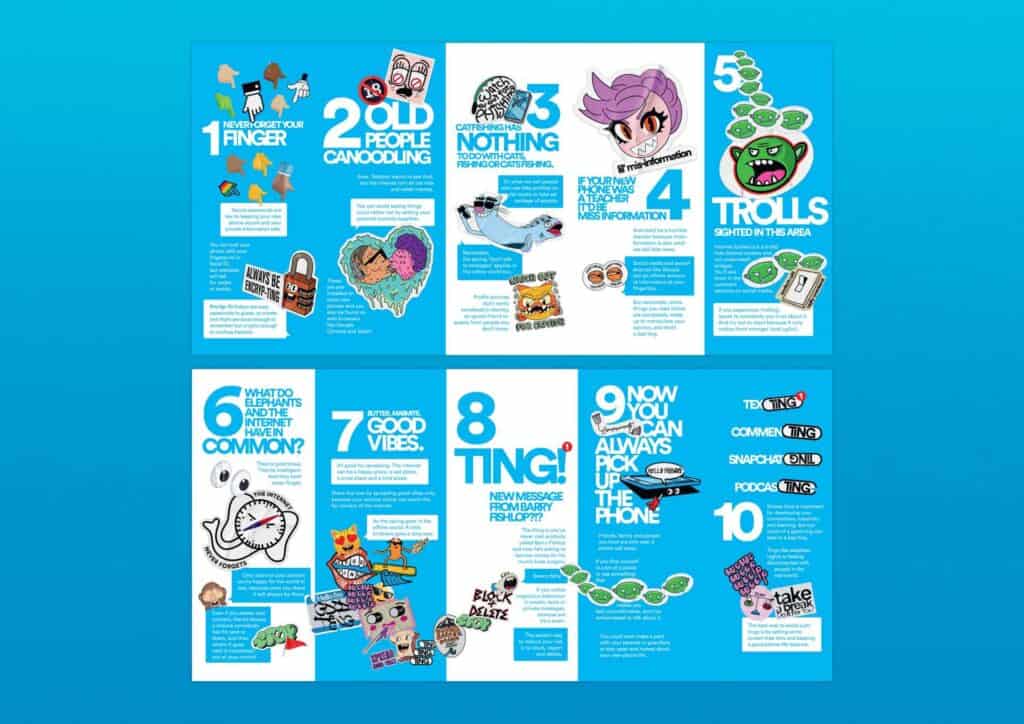
The first is helping parents what to think about, “and agreeing what healthy phone use for their household is going to look like… The kids get [phones] and the parents don’t realise all of the different kinds of things until it becomes a problem.”
Ultimately, parents feel disempowered and reluctant to have conversations with their children about online safety.
Secondly, she continues, “the kids themselves haven’t been taught and empowered what to do, what things to watch out for, what healthy phone use looks like, and what unhealthy phone use might look like.”
But the Good Tings brand challenge went beyond facilitating open conversations between children and guardians. To be receivable, it had to elevate the joy of a young person’s first phone, rather than dampening it.
“For most kids, it’s the most exciting day of their life,” says Bradnick. “What was really behind it for me was how do we create an objective experience where kids and parents can sit together and it doesn’t feel like the parent is lecturing the kid.”

The work: An unboxing experience
“The creative solution for that was really beautiful,” says Harris.
The course and its surrounding media are an exemplar of age-appropriate digital literacy education and marketing, combining music, art, and creativity in its approach to effectively appeal to a young audience.
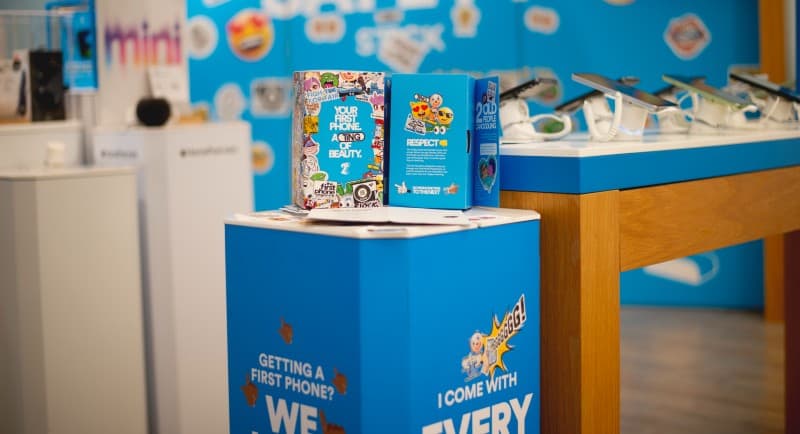
The unboxing includes the program booklet, collectible “sticker bomb” stickers designed by Ad School with young people that also serve as visible reminders of the behaviours learned, parent support resources, and a child-guardian contract to sign together.

Bradnick adds: “it’s a beautiful piece of design packaging, not only as an experience to go through and learn the lesson, but it can actually hold any type of box, so new phones, or a lot of kids get hand-me-downs.”
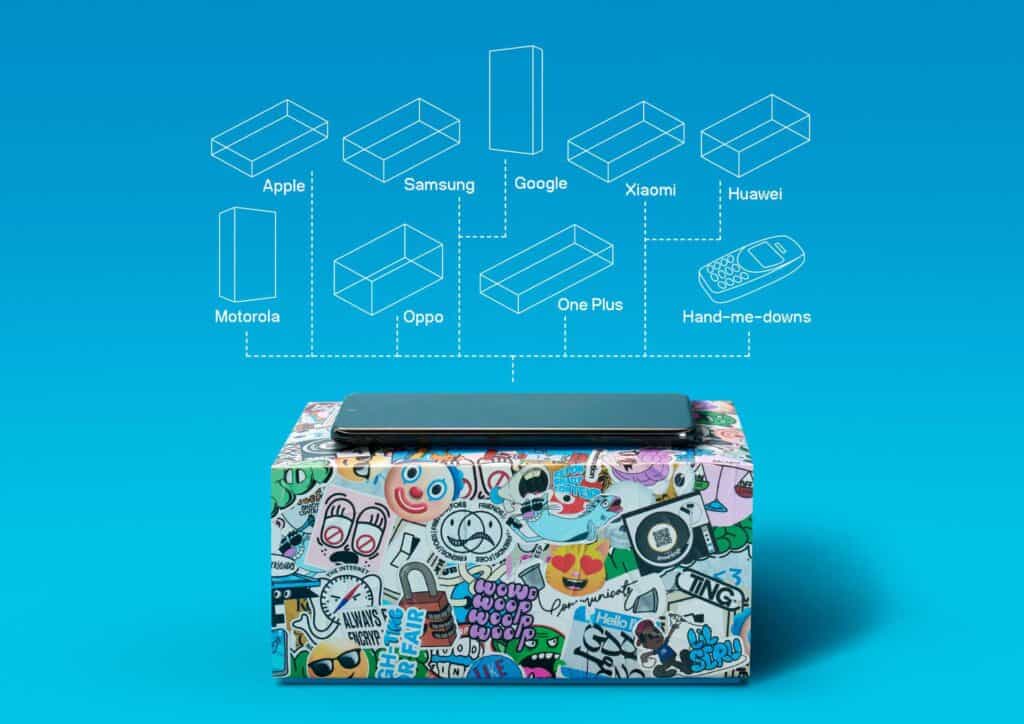
To engage teenage audiences specifically, the agency enlisted UK Grime artist Scrufizzer (Amary Lorenzo), who wrote and performed the titular Good Tings track. The track helps transform the ‘ting’ motif into a phonetic symbol evocative of a phone notification, drawing an association between good and bad phone behaviour, or ‘tings’.
“When kids get their new phone, they’re probably going to be inundated with information, and connection, and notifications. That’s where the ‘tings’ comes from,” Bradnick explains.
“Grime is hugely popular,” he continues. “Any sort of hip hop or street culture is hugely popular amongst kids.”
With Grime, “you do lean into their language and the way they pronounce things, and ‘tings’ is quite a common way of saying ‘things’… But also as an art, it’s one of the few hip hop genres where you can actually tell a story in that it’s quite coherent, so you can actually hear the message.”
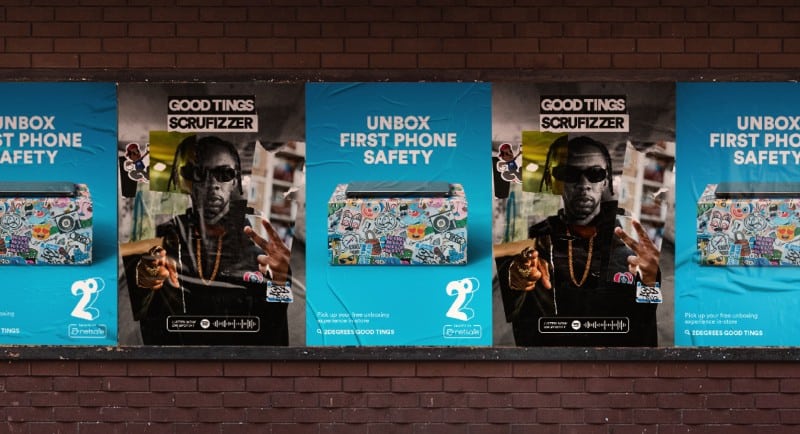
Authenticity and relevance
Managing to market the ‘coolness’ of phone safety to young audiences is no small ask. According to Bradnick, “they have the ability to smell bullshit. But if it’s something that appeals to them and feels authentically aligned with them, I think they don’t mind advertising.”
The content must resonate with their values and interests, Harris adds. “We thought culturally about what was engaging and turned these lessons into entertainment and disguised the lessons as something that they loved,” she says.
For example, while some older people initially didn’t “get” the Scrufizzer track, Bradnick recalls, the campaign’s language, modality, and overall approach have been key to its success with younger audiences, who have responded positively.
The launch saw 40% of New Zealanders engaging with the program, with 95% reporting improved phone and online safety behaviours.
Meanwhile, 2degrees achieved a 35% YoY increase in mobile phone sales.
See also: Exclusive: Wippa and Galluzzo launch 36 Months to raise social media age
–
Top image: Catherine Harris and Shane Bradnick
